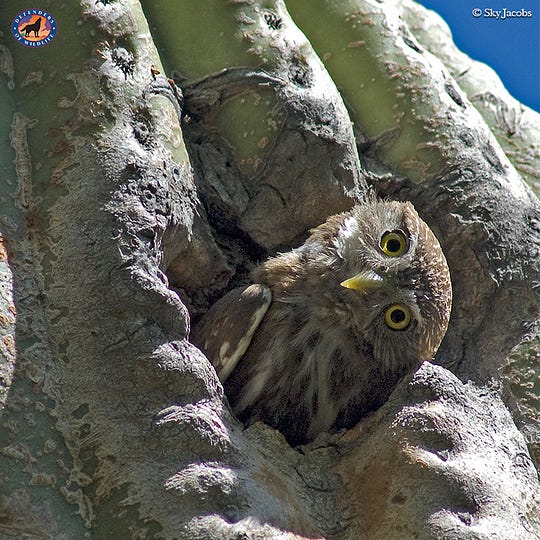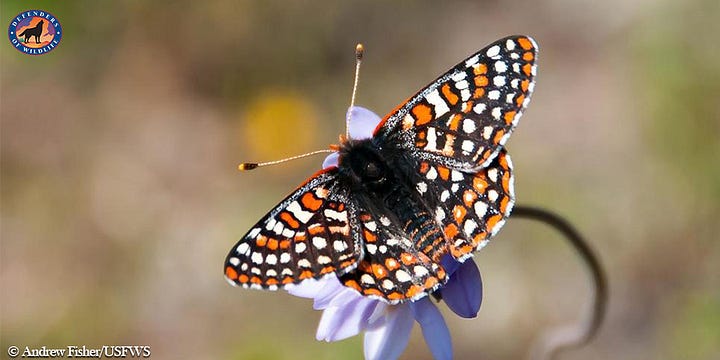There’s a reason “divide and conquer” has remained a tried-and-true strategy for millennia — it works. Unfortunately for conservation hotspots on the U.S.-Mexico border — identified in Defenders’ groundbreaking report In the Shadow of the Border Wall — the border wall will divide habitats, driving already imperiled species towards extinction.
Human activities are already endangering nature in the borderlands. Excessive water use, dense human development — particularly on the coasts — land clearing for agriculture, historical grazing practices and exotic species have driven many borderlands species near extinction. Critical streams and rivers, riparian forests, coastal scrub and grasslands have been fragmented and reduced — some habitats, like the riparian forests of the Rio Grande Delta and native grasslands of California have lost more than 95 percent of their historical extent. Species that depend on these devastated landscapes, like Sonoran pronghorn and ocelot, now find themselves on the Endangered Species List.

Given this failing support system of lands and waters, additional stressors of the border wall will have disastrous consequences.
Blocking off the entire 2,000-mile border between the U.S. and Mexico, as now planned, would take “construction” to a whole new level on par with the Great Wall of China. Based on Department of Homeland Security (DHS) plans and prototypes, it’s highly likely that the border wall will be a 30-foot high concrete barrier topped with steel, flanked by a maze of roads, flood lights and other monitoring technology.
How can the Department of Homeland Security rush ahead without considering endangered species and their fragile habitats or native American archeological sites? By law. So far, using unprecedented authority DHS has waived more than 30 environmental laws, including the National Environmental Policy Act, Endangered Species Act, Federal Water Pollution Control Act, National Historic Preservation Act, Clean Air Act, Archaeological Resources Protection Act and Safe Drinking Water Act.
This means DHS does not need to analyze environmental impacts or get input from the public — including people living on the border whose lives are directly affected. For example, if the wall is built as planned across Santa Ana National Wildlife Refuge, it would likely cost local businesses $34 million per year now flowing from ecotourism.
Although 600 miles of wall have previously been built, there are still gaps where animals can cross the border. But filling these gaps would have disastrous effects. Endangered species like jaguars, Mexican gray wolves and Sonoran pronghorn may not survive in the long term if the wall fragments their populations and prevents them from reaching essential water — like the Rio Grande River — and other resources. Species whose ranges are reduced and fragmented are more prone to extinction.
 Even some birds and butterflies may not be able to cross the wall — both the ferruginous pygmy owl and the Quino checkerspot butterfly rarely fly more than a few feet from the ground; the wall would be a formidable barrier. Noise, lights and human activity on roads will increase the isolating effect of the wall by scaring many animals away.
Even some birds and butterflies may not be able to cross the wall — both the ferruginous pygmy owl and the Quino checkerspot butterfly rarely fly more than a few feet from the ground; the wall would be a formidable barrier. Noise, lights and human activity on roads will increase the isolating effect of the wall by scaring many animals away.Other documented harmful effects include flooding, where the wall alters water flows, destruction of habitat when vegetation is scraped clear for construction or crushed by off-road vehicles, and introduction of exotic, invasive weeds. Exotics like buffelgrass and Sahara mustard spread along roads, carried on vehicle tires, and then spread out, creating dense monocultures that exclude native plants and thereby diminish biodiversity. Native plants that depend on animals and the wind for pollination and seed dispersal could also be split into U.S. and Mexican populations that over time will become genetically distinct, as happened with plants on either side of the Great Wall of China.
We can see examples of the impending disaster by looking at how border walls and fences around the world have harmed wildlife: fences that closed off migration routes in Namibia are linked to the deaths of giraffes, elephants and antelope. A 124-mile fence along the Kazakhstan-Uzbekistan border almost completely blocked saiga antelope migration routes and likely had a hand in the loss of 69 percent of the antelope’s population between 2013 and 2015. Similar reports have come in from the Indian Subcontinent, Europe and the Middle East.

We can expect the same kind of disasters in our precious borderland species if the wall is completed. It is inconceivable that we would stand by and let our biologically diverse borderlands ecosystems be dismantled by a wall. By dividing our borderlands, and dividing the wildlife populations that range across the border, we will undermine recovery efforts. We cannot let that happen.








